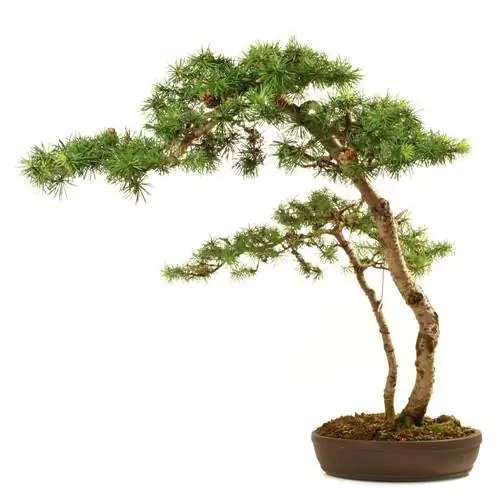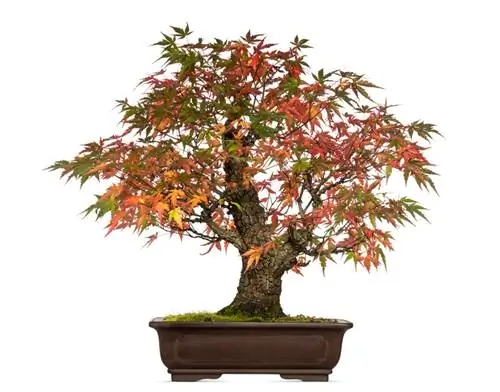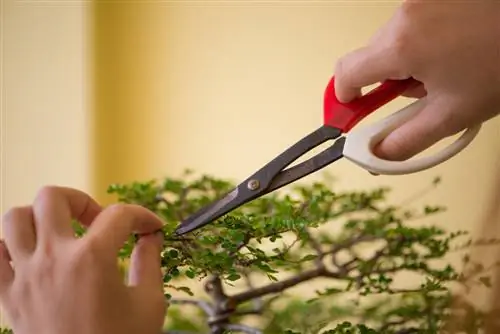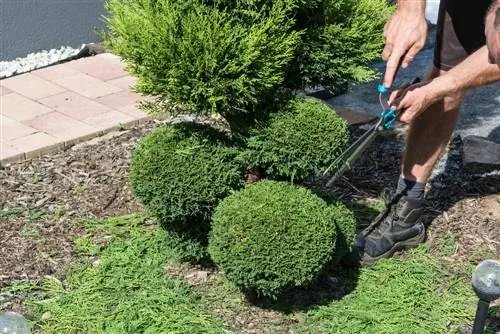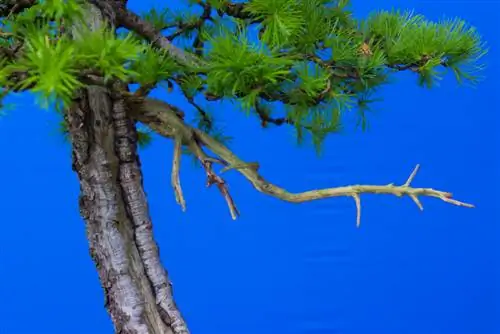- Author admin [email protected].
- Public 2023-12-16 16:46.
- Last modified 2025-01-23 11:21.
Japanese larch is not bothered by bold pruning measures. This fact makes it possible to cultivate them as bonsai. The plant is given a decorative shape, which is then maintained almost unchanged for years with the right care.
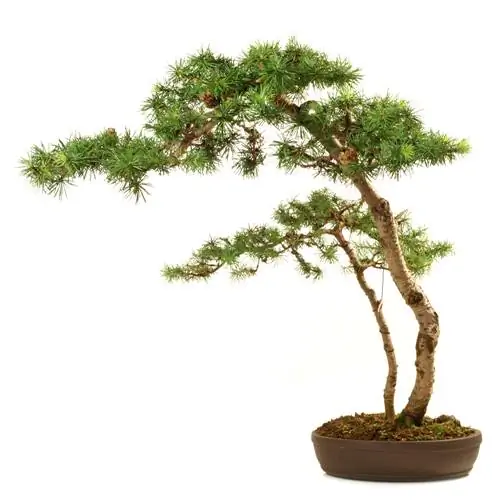
How to care for a Japanese larch bonsai?
A Japanese larch bonsai requires consistently moist soil, regular fertilization from May to September, a sunny location and control for pest infestation. Water less in winter, replace substrate every 2-3 years and cut back roots.
The typical look
The older the bonsai gets, the more it looks like a real tree. The trunk becomes increasingly stronger and its bark takes on a gray to reddish color. The trunk is often unusually shaped, which makes it even more attractive.
The needles sprout in clusters, are 2-3 cm long, soft and a delicate green. In summer their color changes to dark green, in autumn they turn yellow until they finally fall off. This is a peculiarity of the larch that doesn't fit in with the other conifer species.
The flowers are a long time coming; the larch will only bloom for the first time in spring after 15 years at the earliest. The reddish flowers stand out against the green background, the male flowers can be seen on yellow bushes. This is followed by cones that remain attached to the tree for years.
The main task: cutting
Every bonsai lover seems to have their own approach; for example, different information can be found at the time of cutting. You can least go wrong if you buy a ready-made bonsai. In summer you just have to pluck out the new shoots.
Major changes in the shape of the tree should, however, be made in autumn. If you want to delve deeper into the art of cutting bonsai, you should buy the relevant literature (€19.00 on Amazon) and shape the Japanese larch into a cascade or a “mini” forest tree. Over time, your own practical experience is added to the knowledge you have read.
Optimal care for the small tree
The small bonsai tree does not root outdoors like the larger specimens and has to make do with a pot instead. However, this means an increased amount of care for its owner, which he is certainly happy to do. Below are the most important things in brief:
- Keep soil moist throughout
- water more modestly in winter
- daily on hot days
- fertilize from emergence in May until the beginning of September
- every two weeks with a bonsai fertilizer
- check regularly for pests
- take immediate action if infested
Location and wintering
Most owners will cultivate their bonsai indoors and, if possible, put them outside in the summer. Both indoors and outdoors, the small larch tree likes to get enough sun.
Winter is stingy with the sun and often causes temperatures to plummet, but that doesn't bother the bonsai. This tree is hardy and does not necessarily need to be kept warm over the winter. It can also be left outdoors all year round with its bucket.
Tip
Replace the substrate every 2-3 years while keeping the pot size unchanged. The strongly grown roots must be cut back when repotting.

